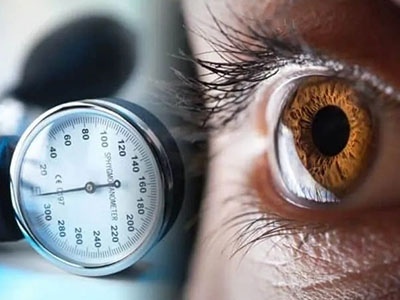EYE TENSION (GLAUCOMA)

What is Glaucoma?
Glaucoma is a disease popularly known as eye pressure. It can damage the optic nerve in the eye, leading to vision loss. The optic nerve is very important because it transmits what we see to the brain. Glaucoma usually occurs with increased intraocular pressure, but sometimes glaucoma can develop even if eye pressure is normal.
Glaucoma can occur at any age, but it generally occurs more frequently with age. It is one of the important causes that can lead to blindness, especially in old age. It may be difficult to detect at first because it usually does not cause symptoms and the person does not realize that he or she has vision problems until the advanced stages of the disease.
That's why regular eye checks are of great importance. With early diagnosis, vision loss can be slowed or stopped. With treatment, the progression of glaucoma can be controlled.
What are the Types of Glaucoma?
Glaucoma is divided into different types according to its formation and symptoms. These; open angle, closed angle, normal tension and congenital glaucoma.
Open Angle Glaucoma
This is the most common type of glaucoma. The channels that allow the fluid in the eye to be removed become blocked and the fluid accumulates and creates pressure. This pressure damages the optic nerve over time. It may be difficult to detect because it usually does not cause symptoms.
Closed Angle Glaucoma
This type of glaucoma can occur suddenly and with severe symptoms. When the pupil dilates rapidly, the drainage channels become blocked and eye pressure rises rapidly. It may suddenly manifest itself with symptoms such as eye pain, headache, blurred vision, and nausea. It is a condition that requires urgent treatment, otherwise it may lead to permanent vision loss.
Normal Tension Glaucoma
In this type, intraocular pressure is normal, but the optic nerve is still damaged. Although it is not known exactly why it occurs, it can still cause vision loss.
Congenital Glaucoma
It is a congenital condition. Since the drainage channels in babies' eyes do not develop properly, pressure builds up and causes vision problems. Symptoms are sometimes noticed at birth, and sometimes appear during childhood.
Causes and Risk Factors of Glaucoma
Although the cause of glaucoma is not fully known, increased intraocular pressure is one of the most important risk factors. Apart from that:
- advancing age
- Having a family history of glaucoma
- Health problems such as diabetes and high blood pressure
- Being highly myopic or hyperopic
- Previous eye injury or eye surgery
Factors such as these also increase the risk of developing glaucoma.
Symptoms of Glaucoma
Glaucoma often does not cause symptoms. However, in some people:
- eye pain
- blurred vision
- Nausea
- Headache
- eye redness
Symptoms such as these may occur. These symptoms are especially seen in acute glaucoma crisis and require urgent intervention.
When Should You See a Doctor?
Glaucoma may sometimes not cause symptoms, so it is very important to have regular eye checks. If you experience sudden symptoms during an acute glaucoma attack, you should consult a doctor immediately.
How Is Glaucoma Diagnosed?
Glaucoma is usually noticed during eye exams. Tests are performed to measure intraocular pressure. Visual acuity, visual field tests and the condition of the optic nerve are also examined.
Glaucoma Treatment
There is no cure for glaucoma, but symptoms can be controlled. The progression of the disease can be slowed down with medications, eye drops or surgical interventions. If left untreated, vision loss is inevitable, so if symptoms are noticed, it is necessary to consult a doctor.
Can Glaucoma Be Prevented?
Although glaucoma cannot be completely prevented, it can be diagnosed early with regular eye checks. In this way, vision loss can be prevented or slowed down. It is recommended that people in the risk group be examined more frequently.

